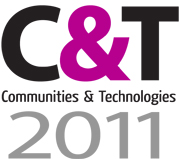Mark Bilandzic – PhD Confirmation Seminar
Time: 28 April · 09:00 – 10:30
Location: Z2-304 Creative Industries Precinct QUT Kelvin Grove Campus, Musk Avenue, Kelvin Grove, Australia
The Embodied Hybrid Space: Designing for Digital Encounters in Physical Environments
Mark Bilandzic
PhD Confirmation Seminar
QUT Urban Informatics Research Lab
https://www.urbaninformatics.net/people/mark/
Facebook event entry
The emergence of mobile and ubiquitous computing has created what is referred to as a hybrid space – a virtual layer of digital information and interaction opportunities that sits on top and augments the physical environment. The increasing connectedness through such media, from anywhere to anybody at anytime, makes us less dependent on being physically present somewhere in particular. This thesis focuses on the opposite: What is the role of ubiquitous computing in making physical presence at a particular place more attractive?
Acknowledging historic context and identity as important attributes of place, this thesis embarks on a ‘global sense of place’ in which the cultural diversity, multiple identities, backgrounds, skills and experiences of people traversing a place are regarded as social assets of that place. The aim is to explore how physical architecture and infrastructure of a place can be mediated towards making such invisible assets visible, thus augmenting people’s situated social experience. Thereby, the focus is on embodied media, i.e. media that materialise digital information as observable and sometimes interactive parts of the physical environment hence amplify people’s real world experience, rather than substituting or moving it to virtual spaces.
Guided by a design-oriented action research approach, this thesis investigates the case study of The Edge (http://edgeqld.org.au/), a Digital Culture Centre initiated by the State Library of Queensland (SLQ) in Brisbane, Australia. The Edge maintains the traditional values of libraries as hubs for knowledge and information, though not through books and information archives, but as a place for both planned and incidental collaboration between its visitors.
Design interventions of the case study at the Edge target at bridging spatial, temporal and social barriers to facilitate shared encounters between people that would not be possible otherwise. The resulting medium, a combination of physical and digital components is what the title refers to as the “embodied hybrid space”. The findings from the case study will produce actionable knowledge for the Edge, as well as other institutions in the GLAM (galleries, libraries, archives, museums) sector with similar settings and goals in regards to place making.


